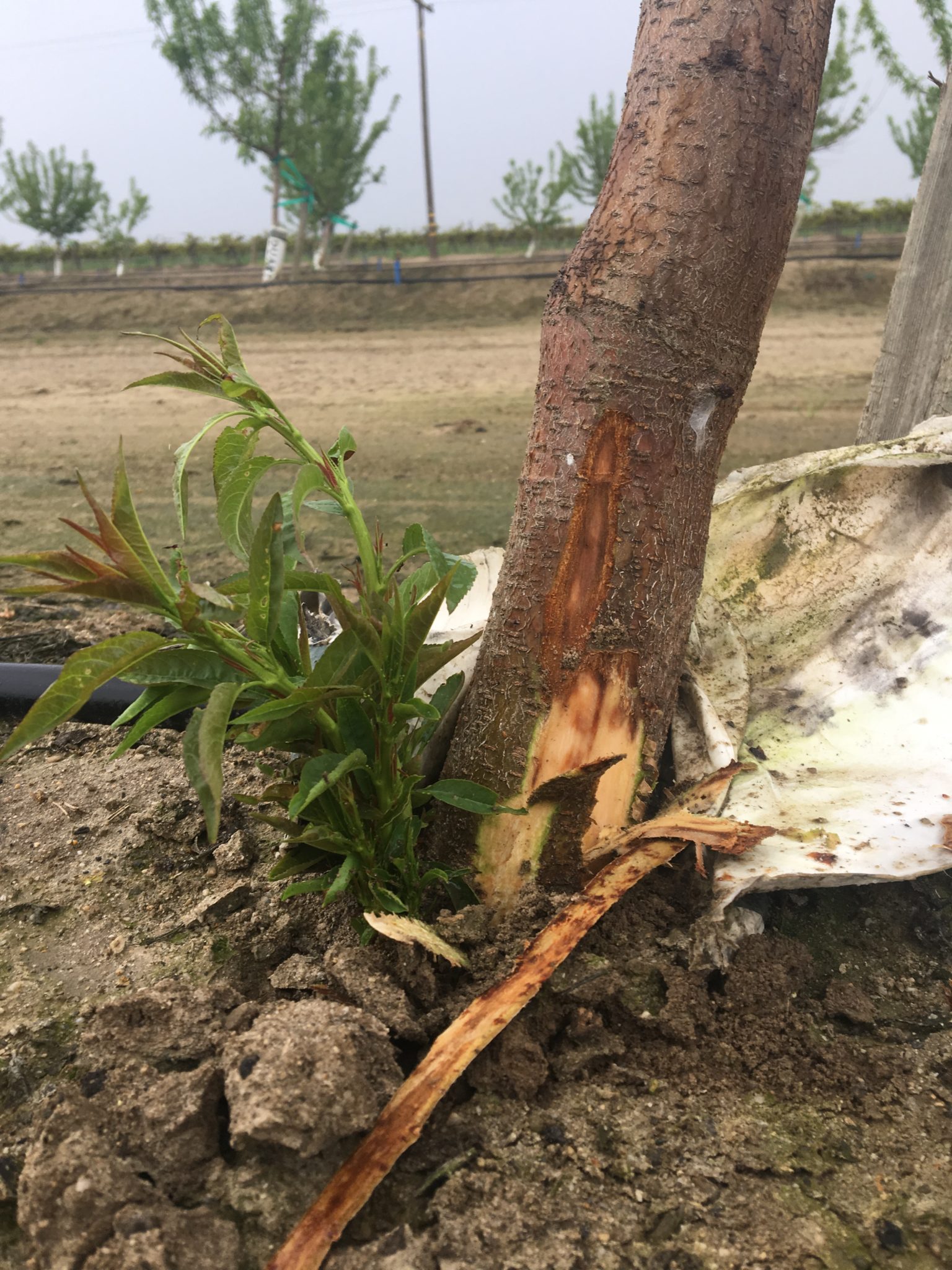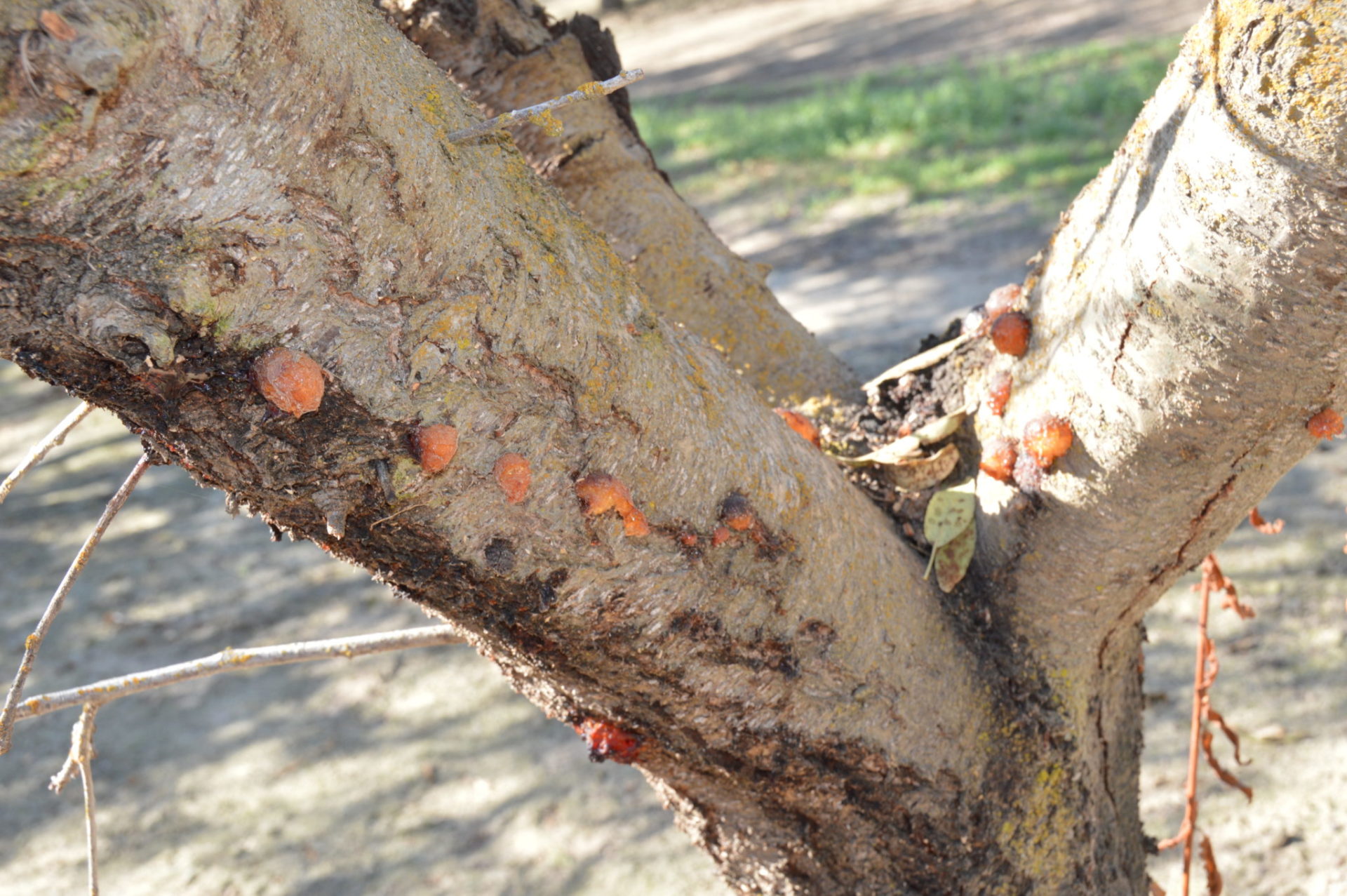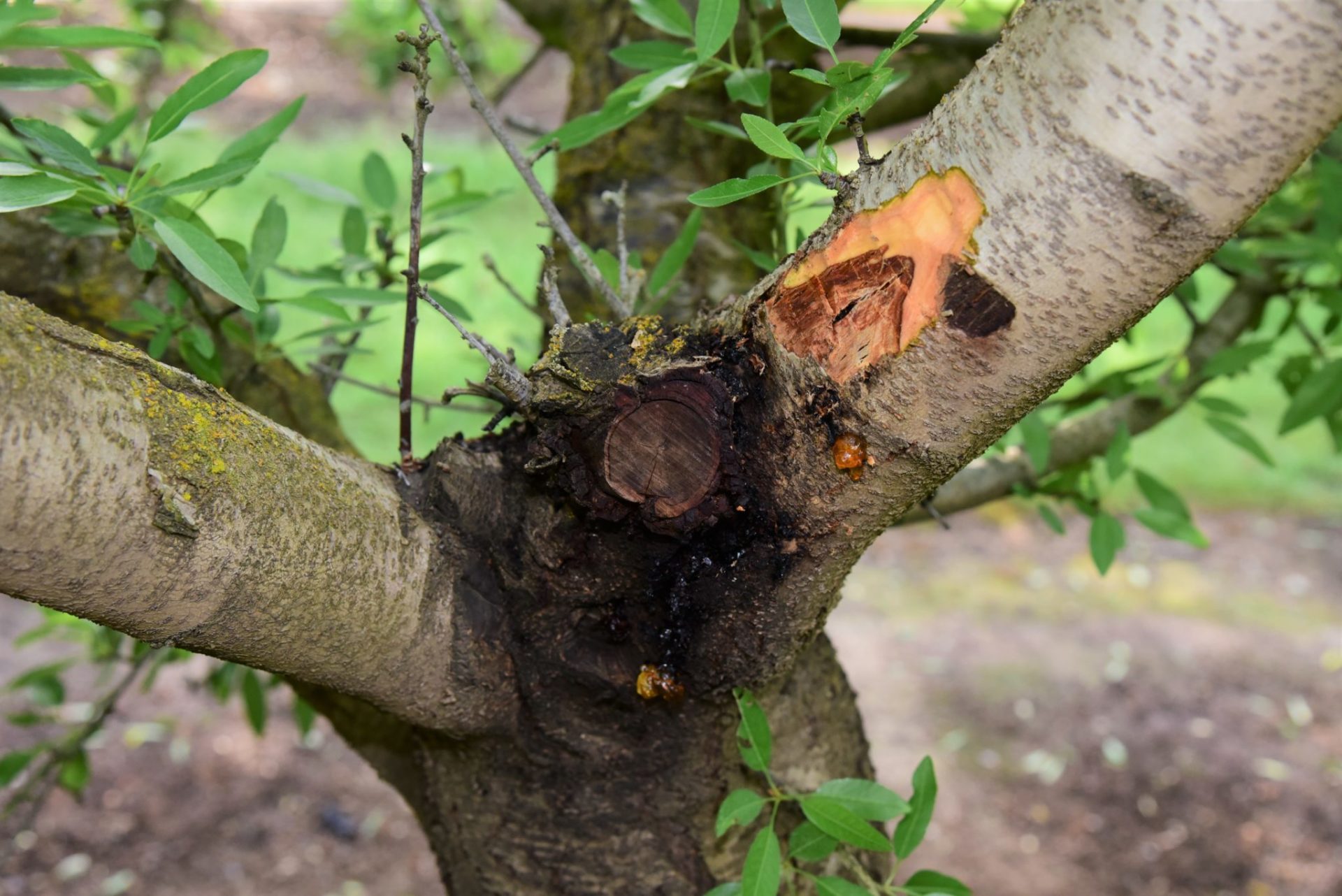
Knowing which pathogen is likely causing trunk and scaffold cankers in almond trees, or which pathogen is the most prevalent invader in an orchard, is critical for the adoption of the most effective control solutions.
Florent Trouillas, UCCE specialist at the Kearney Agricultural Research and Extension Center in Parlier, said trunk and scaffold canker disease in almond orchards can be found statewide and is the most common call he receives from pest control advisors and farm advisors.
Field diagnosis is often done based on symptom observations, but those can often be misleading. It is common in the Central Valley, he noted, after finding gumming on trees, to blame the infection on Phytophthora. Phytophthora is a common pathogen that causes gumming, but the symptoms can easily be confused with those of Botryosphaeria and Ceratocystis, both canker-causing pathogens. Control strategies for trunk and scaffold canker diseases can differ, making identification of the problem pathogen important. With that information, a grower or farm manager may adopt specific management practices to control spread of the pathogen.
There are some distinctive symptoms among trunk and scaffold canker diseases, including outer distribution of gumballs, girdling and vascular discoloration. Sampling infected trees in 130 almond orchards in the Central Valley, Trouillas found that Botryosphaeriaceae and Ceratocystis were the most commonly found canker diseases in almond. Ceratocystis canker is associated more with shaker damage, but can also infect branches with fresh pruning wounds.
Trunk and scaffold canker diseases in almond trees can lead to production losses as well as tree losses. In addition to gumming, infected trees can have discolored vascular tissues and wood necrosis. Gumming on the trunk or at the scaffold is an obvious symptom. Scaffold branches can begin to die and in severe cases, the tree will die. Pathogens known to cause trunk and scaffold canker diseases are: Ceratocystis, which is associated with shaker damage and bark injuries; Botryosphaeria fungi, associated with band canker; and Phytopthora, a soilborne pathogen.

Tree Damage Invites Infection
While the pathogens that cause canker may be different, there are some common factors in trunk and scaffold canker diseases. Most have their origin in tree damage at harvest or pruning wounds. The structure of the tree may also predispose it to canker. Poor scaffold selection that causes cracking can be an entry point for pathogens. Trouillas said canker diseases can be found in all ages, but they become more obvious starting in the 3- to 4-leaf stage. Phytopthora can cause death in young trees, while in older trees, canker diseases are more of a secondary issue.
UC Davis graduate student Leslie Holland and Trouillas wrote in Sac Valley Orchards that most fungal pathogens that cause canker diseases are present throughout the Central Valley. Practices that minimize the conditions that initiate disease development in an orchard are important.
Rain events have a strong connection to spread of fungal canker pathogens that invade pruning wounds. Pruning for scaffold selection or removal of branches can leave a tree vulnerable to infection if the wounds are fresh when a rain even occurs. Pruning exposes the vascular and cambial tissues that are normally protected by bark. If the wound has not healed before a rain, an infection can occur.
Field trials conducted by Holland and Trouillas in the Sacramento and San Joaquin valleys showed that canker infections were lowest when pruning cuts were made in January, compared to pruning cuts done in September, October and November. Wound healing does progress faster in warmer temperatures, but studies of almond pruning wounds and cankers caused by Phytopthora showed that the tree substances lignin and suberin, which are associated with wound healing, increase in production in January after declining in November and December.
Fresh pruning wounds in optimum environmental conditions for infection had the highest rates of infection. As time after pruning increased, wound susceptibility to infection decreased. By eight weeks, infection rates fell to 10%.

Protection Products
Trouillas said trials of products that contained fungicides, biocontrols, paint and wound sealants were conducted to find the best protection when applied to pruning wounds including primary and secondary scaffold selection.
Topsin M (thiophanate-methyl) provided excellent protection of pruning wounds, reducing infection by 82% overall. A biological control product consisting of the fungus (Trichoderma atroviride SC1) is being considered for registration as Vintec. It has also shown effectiveness, reducing infection by 80 to 100%. Acrylic paint produced inconsistent results, only reducing infection rates by 45%.
The Topsin M product is being recommended for use as a pruning wound protectant on almond trees. Conventional fungicides may be applied to pruning wounds at label rates with an airblast sprayer to achieve good coverage of wounds.
Topsin M may also be applied to trees with shaker injuries to reduce the risks of infection with Ceratocystis. The injury must first be cleaned by removing the broken bark and avoiding the newly formed cracks that allow entry to insects that can transmit the Ceratocystis pathogen. Cleaning the bark and exposing the cambium also allows for better natural healing. Topsin M may be applied to the cleaned area to reduce the risks of contamination with Ceratocystis.
Remedial surgeries or removal of dead or diseased wood can be labor-intensive, but it can reduce the pathogen load in an orchard. Surgery requires making sure to cut several inches into healthy wood to make sure all infected parts are removed. For Ceratocystis cankers, it is recommended to clean around the infected tissue, removing bark and exposing the cambium to promote healing. Diseased or dying wood should be removed as early as infection is detected to avoid further spread into the tree trunk.










